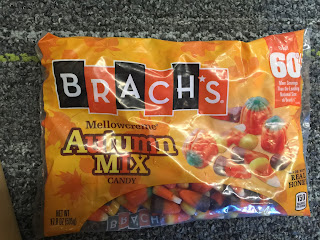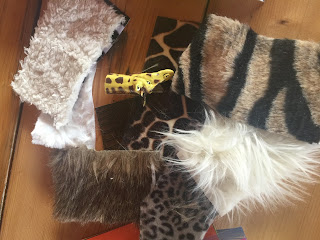Hello Friends!
Merry Christmas, Happy Holidays, Happy Hanukkah!
I also recommend that you read the article, Holiday Survival for Kids with Sensory Impairments on Wonderbaby.org (link: http://www.wonderbaby.org/articles/wonderbaby-holiday-survival-guide). I also recommend Tactile Holidays over on Thomas Marshall Does it All blog (link: http://www.thomasmarshalldoesitall.com/tactile-holidays/).
Here are some of my favorite Christmas and winter holiday activities:
What’s in the stocking Christmas game?
Source:http://littlewondersdays.blogspot.com/2010/12/whats-in-stocking.html
Accessibility options:
· Trade objects found around the house to objects specifically pertaining to Christmas such as an ornament, mitten, candy cane, Christmas lights, mistletoe, etc.
· Game option 1: Ask kids to go find a few small items in the house and bring them secretly to me so I could put them into a Christmas stocking. Then I added a few common items myself and invited the kids to sit with me. We took turns passing the stocking and reaching in to identify an object with only our hands.
· Game option 2: Play a match style. Have two sets of objects. Velcro one set of objects to the stocking and place the other set of objects around the walls of the house (to work on trailing) or place objects on the floor with you.
· Use objects that teach about Christmas such as a bow, candy cane, gingerbread man, mini nutcracker, jingle bells, little present, garland. The stocking can be a lesson by itself!
· This can be a fun game to talk about Christmas concepts. It also can promote discovery of objects, object permanence and introduce specific things about Christmas.
The Sweet Smell of Christmas
· this book is a scratch and sniff book that can also use objects to teach about concepts of Christmas.
· Scent is a fun way to teach about the holiday season.
· You can use the stickers for smell.
Objects to add to the story (these are items that are discussed during the story):
· Pine cone
· Tinsel
· Candy canes
· Gingerbread cookie cutter or gingerbread cookie
· Orange
· Hot chocolate
· Presents
· Mini Christmas tree
Christmas Tree Discovery Bottle Activity
Materials:
· Voss water bottles (can be purchased from Smiths)
· garland
· ornaments
· mini lights
Great for babies
Portable
Easy to switch out materials
Fun I Spy game
Make more than one!
DIY Portable Light Box
Source: http://theimaginationtree.com/2013/01/diy-light-box-for-sensory-play.html
Many kiddos with vision impairments like using light boxes (or light tables) but they can big to carry around to holiday parties.
Make a portable one!
Materials:
Small clear container (buy them from Walmart or Target)
Battery powered lights
Window clings (encourage family members to have them at their house. They are a cheap and fun way to play on the light box).
Many kiddos with vision impairments like using light boxes (or light tables) but they can big to carry around to holiday parties.
Make a portable one!
Materials:
Small clear container (buy them from Walmart or Target)
Battery powered lights
Window clings (encourage family members to have them at their house. They are a cheap and fun way to play on the light box).
**I've made so many of these!! They work great and so many other kids use them!**
Holiday Scent Jars
Holiday Scent Jars

They are great for little ones that a sensitive to touch or have lesser motor control.
They are easy to make!
Materials:
Essential oils
Cotton balls
Scentsicals (scent sticks that can be purchased from Walmart or Michaels for about $5).
Empty shaker jars or sandwich bags.
You can match scent to true object (see picture above) or you can have just the scent jar.
*Be careful to not introduce too many scents at one time. Introduce scents one at a time.
It’s okay to really make a strong scent. Subtle scents may not provide enough to catch attention.
Magnetic Christmas Tree Activity
The lights are added for some visual attention for little ones who are attracted to lights.
Add an outline to the shape using puff paint or pipe cleaners for little ones with no vision. Remember to be careful for visual clutter. Pick simple colors that don’t have too much patterns.
· Cookie sheet (buy the cheap ones for about $1)
· Bows and ornaments (I used bows because I worried that little ornaments might be a choking concern).
· Magnets and hot glue
· Battery pack of lights taped on the inside ledge of cookie sheet
My Christmas 5 Senses Book
I took out the word “I” so that we can focus on the sense and not on any potential limitations. Even if a sense is limited, it still can be discussed with little ones.Materials:
-Cardstock (I laminated it for issues with drool and to make it more durable. They do make non glare laminate)
-Hot glue
-objects
**I've made so many of these books and they turn out great!!**
Christmas Photo Tree Activity
Butcher paper Christmas tree activity
Can use pictures of items or people that your little one will see during the holiday.
Use objects such as ornaments, pieces of garland, candy canes for little ones with no vision.
Outline the tree with garland, pipe cleaners or anything that can provide a tactual outline.
Materials:
Butcher paper (or construction paper)
Velcro
Pictures
Sensory Centerpieces
Materials:
-hurricane vases or large plastic bowls
-battery powered lights
-ornaments, pine cones (with scent!)
Winter Activity
Source:http://www.notimeforflashcards.com/2014/01/snow-window-winter-activity-for-kids.html
Christmas isn’t the only thing to talk about during the holiday season. Winter has many sensory opportunities!
Some little ones may not be able to touch ice or snow easily. Bring the winter activities to them!
Teach about ice, frost and snow:
Christmas isn’t the only thing to talk about during the holiday season. Winter has many sensory opportunities!
Some little ones may not be able to touch ice or snow easily. Bring the winter activities to them!
Teach about ice, frost and snow:
-Frosted window activity using contact paper (use the sticky side), painters tape, hot glue snowflakes, snowflake ornaments, cotton balls
-Head to Michael’s and get some flocked branches and mini trees. Cut them up and let them compare and contrast flocked trees and evergreen trees
-freeze some items such as cranberries, wreaths, pine cones, etc and discover items.
-Head to Michael’s and get some flocked branches and mini trees. Cut them up and let them compare and contrast flocked trees and evergreen trees
-freeze some items such as cranberries, wreaths, pine cones, etc and discover items.
Christmas Tree Sensory Bags
· Source: http://www.giftofcuriosity.com/christmas-tree-sensory-bags/#_a5y_p=2781860
![]() These can be used on the light box too!
These can be used on the light box too!
The Christmas tree in the original idea doesn’t have enough contrast. I took a pipe cleaner and glued it to the outside of the bag to provide better accessibility.
The bags focus on the sensory opportunity so allow your little one to squish, pat and grab the bag.
Don’t forget about the feet! Some little ones don’t like to use their hands just yet so let them stomp with their feet or lay on it with their head or other parts of their body.
The Christmas tree in the original idea doesn’t have enough contrast. I took a pipe cleaner and glued it to the outside of the bag to provide better accessibility.
The bags focus on the sensory opportunity so allow your little one to squish, pat and grab the bag.
Don’t forget about the feet! Some little ones don’t like to use their hands just yet so let them stomp with their feet or lay on it with their head or other parts of their body.
**I've so many of these, too! They are so fun! I used different scented gels and aloe vera gel.
Materials:
-quart or gallon bags
-hair gel
-sequins and buttons
-glue
-pipe cleaners
Materials:
-quart or gallon bags
-hair gel
-sequins and buttons
-glue
-pipe cleaners

















































